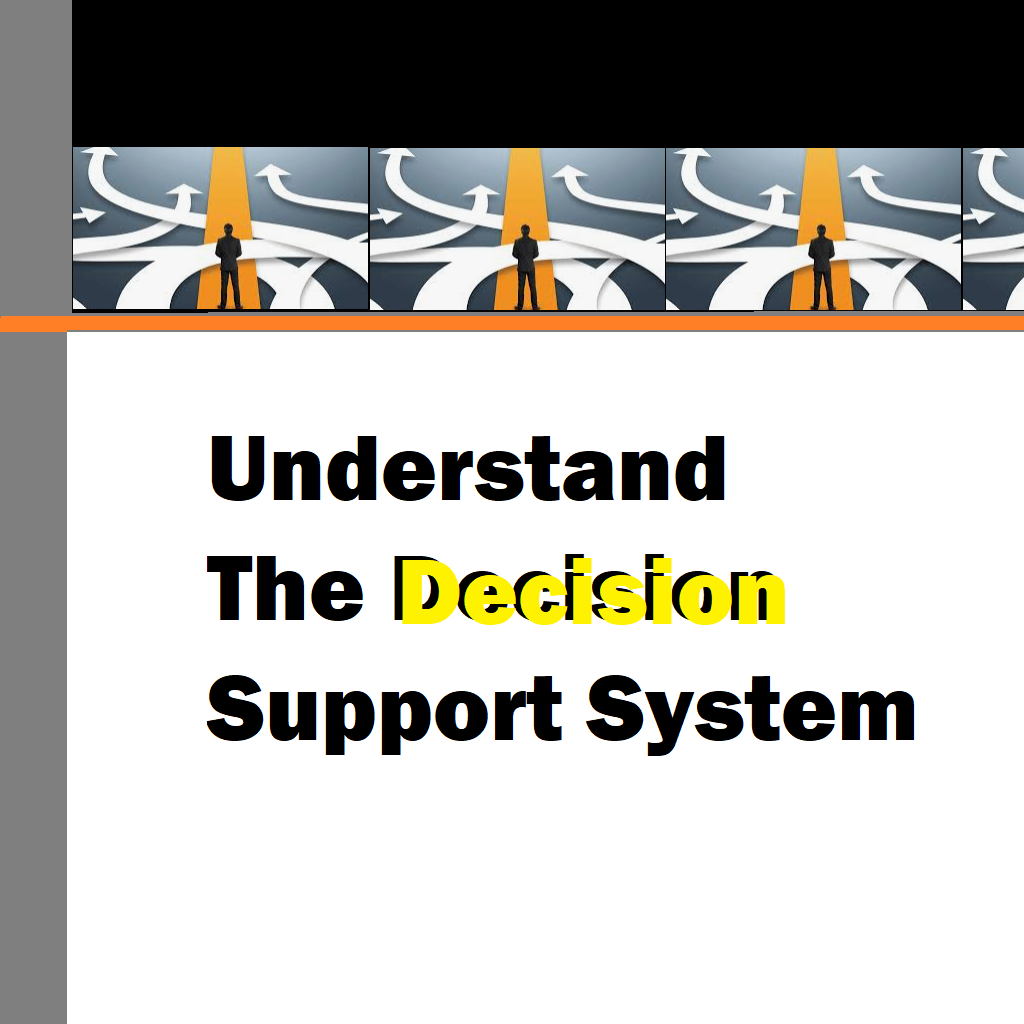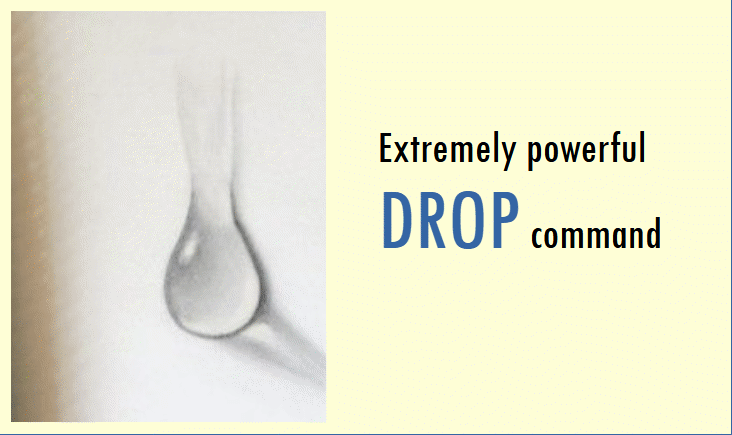Here in this article we are providing essentials to thinking like a business analyst in software. We will also talk about the technical skills for business analyst – First off it’s essential to develop a mindset that combines analytical thinking, business acumen, and a deep understanding of software development processes. A software business analyst plays a crucial role in the software development process by bridging the gap between business stakeholders and technology teams. Their primary responsibility is to ensure that software solutions meet the needs and objectives of the business while aligning with technical capabilities. Some key principles and strategies to help you think like a software business analyst and improve upon your work ethics –
1. Understand the Business Context: Gain a thorough understanding of the organization’s goals, objectives, and the industry in which it operates. This knowledge will help you align software solutions with the business’s needs and contribute to its success.
2. Analyze Stakeholder Requirements: Engage with stakeholders to elicit, analyze, and prioritize their requirements. Use techniques like interviews, workshops, and documentation review to ensure a comprehensive understanding of their needs, expectations, and constraints.
3. Bridge the Gap between Business and Technology: Act as a liaison between business stakeholders and technical teams. Translate business requirements into technical specifications and vice versa, ensuring effective communication and alignment between the two groups.
4. Apply Critical Thinking: Develop strong analytical skills to identify problems, opportunities, and potential risks. Analyze complex situations, break them down into smaller components, and assess their impact on business processes and software systems.
5. Use Modeling Techniques: Utilize modeling techniques such as use case diagrams, process flows, and data flow diagrams to visualize requirements, system behavior, and data interactions. These visual representations help stakeholders better understand the proposed solutions and facilitate discussions.
6. Stay Updated with Technology Trends: Continuously enhance your knowledge of software development methodologies, industry trends, and emerging technologies. Understand how new technologies can be leveraged to solve business problems and drive innovation.
7. Prioritize and Manage Requirements: Employ techniques like MoSCoW (Must have, Should have, Could have, Won’t have) or the Kano model to prioritize requirements based on their importance and impact. Additionally, use requirement management tools to track, document, and manage changes to requirements throughout the software development lifecycle.
8. Foster Collaboration: Collaborate closely with developers, testers, and other project stakeholders to ensure a shared understanding of requirements and facilitate the development process. Encourage open communication, manage conflicts, and facilitate effective decision-making.
9. Think in Terms of Solutions: Instead of merely documenting requirements, focus on proposing practical solutions. Understand the capabilities and limitations of existing software systems and consider how they can be leveraged or improved to meet business needs.
10. Embrace an Agile Mindset: Agile methodologies like Scrum or Kanban are widely adopted in software development. Embrace the agile mindset of iterative development, adaptability, and continuous improvement. Be open to change and work collaboratively in cross-functional teams.
Thinking like a software business analyst requires a blend of technical expertise, business acumen, and interpersonal skills. If you want to know what are the 3 most important skills of business analyst? or the top 5 skills for business analyst read on.
By continuously developing these skills and staying attuned to the needs of the business and the capabilities of technology, you’ll be well-equipped to excel in the role of a software business analyst.
Some points about Agile Mindset
The agile mindset refers to a set of values, principles, and beliefs that guide the way individuals and teams approach work and problem-solving in an agile environment. It emphasizes flexibility, collaboration, adaptability, and continuous improvement. Some key aspects of the agile mindset are listed below –
1. Embracing Change: Agile practitioners understand that change is inevitable and often necessary to deliver value. Instead of resisting change, they embrace it and view it as an opportunity to learn, iterate, and improve.
2. Customer Collaboration: Agile places a strong emphasis on customer collaboration and involvement throughout the development process. Agile practitioners seek continuous feedback from customers and stakeholders to ensure that the final product meets their needs and expectations.
3. Iterative and Incremental Development: Agile methodologies promote iterative and incremental development, breaking down work into smaller, manageable chunks called iterations or sprints. This approach allows for faster feedback, early value delivery, and the ability to adapt based on evolving requirements.
4. Self-Organizing Teams: Agile teams are self-organizing and cross-functional, with members collaborating closely to achieve project goals. They have autonomy in decision-making, take ownership of their work, and are collectively responsible for delivering value.
5. Continuous Learning and Improvement: Agile practitioners foster a culture of continuous learning and improvement. They regularly reflect on their work, identify areas for improvement, and implement changes to enhance efficiency, quality, and customer satisfaction.
6. Transparency and Communication: Agile promotes transparency and open communication within teams and with stakeholders. Information is shared openly, progress is visible, and collaboration is encouraged to ensure everyone has a clear understanding of project goals and status.
7. Focus on Delivering Value: Agile prioritizes delivering value to the customer early and frequently. Agile practitioners focus on identifying the most valuable features and work to deliver them as quickly as possible, enabling stakeholders to realize benefits sooner.
8. Emphasis on Individuals and Interactions: Agile recognizes the importance of individuals and interactions over processes and tools. Agile practitioners value face-to-face communication, collaboration, and the skills, expertise, and diversity of the team members.
9. Embracing Empirical Process Control: Agile methodologies rely on empirical process control, which means making decisions based on real-time information and observations. Agile practitioners use feedback loops, such as daily stand-ups and retrospectives, to inspect and adapt their processes.
10. Trust and Respect: Agile teams foster an environment of trust and respect, where individuals are empowered to contribute their ideas, take risks, and learn from failures. Mutual trust and respect create a supportive atmosphere for collaboration and innovation.
The agile mindset is not limited to software development but can be applied to various domains and industries. It promotes a flexible and adaptive approach to work, enabling teams to respond effectively to changing requirements, deliver high-quality products, and continuously improve their processes.
Critical thinking and how can we apply it in software business perspective?
Critical thinking is the ability to analyze, evaluate, and interpret information objectively and logically. It involves questioning assumptions, examining evidence, considering multiple perspectives, and making informed judgments or decisions. In the software business perspective, critical thinking is essential for various activities, including problem-solving, decision-making, and assessing the viability of software solutions. How can this be achieved, read on –
1. Problem Identification and Analysis: Critical thinking helps identify and define problems or challenges accurately. It involves gathering relevant information, analyzing the situation from different angles, and understanding the underlying causes and impacts of the problem.
2. Requirements Analysis: When working as a software business analyst, critical thinking is crucial for analyzing requirements. It involves questioning and clarifying ambiguous or incomplete requirements, identifying gaps, and understanding the implications of different options.
3. Solution Evaluation: Critical thinking allows you to evaluate potential software solutions objectively. Consider the advantages and disadvantages of each option, assess their alignment with business goals and requirements, and anticipate potential risks and trade-offs.
4. Risk Assessment: In the software business context, critical thinking helps in identifying and assessing risks associated with software development and implementation. It involves analyzing potential risks, evaluating their likelihood and impact, and developing mitigation strategies.
5. Decision-Making: Critical thinking supports effective decision-making by weighing available information, considering alternatives, and evaluating their potential outcomes. It helps you make informed decisions based on logical reasoning, evidence, and the best interests of the business.
6. Systematic Approach: Critical thinking encourages a systematic approach to problem-solving and decision-making. It helps you break complex issues into manageable parts, analyze each component independently, and then synthesize the findings to form a comprehensive understanding.
7. Quality Assurance: Critical thinking is valuable when performing quality assurance activities in software development. It helps in identifying discrepancies, inconsistencies, or potential issues in the software and its documentation. Critical thinking enables you to assess whether the software meets the required standards and specifications.
8. Continuous Improvement: Critical thinking plays a significant role in promoting a culture of continuous improvement. It involves reflecting on past experiences, identifying areas for enhancement, and developing strategies to address weaknesses and enhance efficiency.
9. Collaboration and Communication: Critical thinking fosters effective collaboration and communication with stakeholders. It encourages asking thoughtful questions, actively listening to others’ perspectives, and engaging in constructive dialogue to ensure a shared understanding of complex software business issues.
10. Ethical Considerations: Critical thinking helps in identifying and evaluating ethical implications related to software development and business decisions. It prompts you to consider ethical standards, legal requirements, and the potential impacts on stakeholders, enabling you to make ethical choices.
By applying critical thinking skills in the software business context, you can enhance problem-solving, decision-making, and overall effectiveness in analyzing and addressing complex challenges.
Bridging the gap [Business & Technology]
Bridging the gap between business and technology is crucial for successful software projects. There are some wonderful Business analytics softwares that provide you superb information at your fingertips. Take an example of marketing analytics software –
Marketing Analytics Software
Marketing Analytics Software is a powerful tool designed to empower businesses with valuable insights into their marketing efforts. This software goes beyond traditional data analysis, offering a comprehensive suite of features to enhance decision-making and maximize return on investment.
Key Features:
- Data Integration:
- Seamlessly integrate data from various marketing channels, including social media, email campaigns, website traffic, and more.
- Centralize diverse data sources to provide a holistic view of marketing performance.
- Advanced Analytics:
- Utilize sophisticated analytics algorithms to interpret large datasets.
- Uncover trends, patterns, and correlations that offer actionable intelligence for strategic marketing decisions.
- Real-time Reporting:
- Access real-time reports and dashboards to monitor campaign performance instantly.
- Receive timely insights to make quick adjustments and optimize ongoing marketing strategies.
- Customer Segmentation:
- Implement targeted marketing campaigns by analyzing customer segments.
- Identify and understand different customer groups to tailor messages for maximum impact.
- Conversion Tracking:
- Track and analyze conversion rates across various touchpoints.
- Identify the most effective channels and campaigns that contribute to lead generation and customer acquisition.
- ROI Measurement:
- Calculate the return on investment for each marketing campaign.
- Assess the effectiveness of marketing spend and allocate resources strategically.
- Predictive Analytics:
- Leverage predictive modeling to forecast future trends and customer behaviors.
- Anticipate market changes and proactively adjust marketing strategies.
- Competitor Analysis:
- Monitor and analyze the marketing activities of competitors.
- Gain insights into market trends and adjust strategies to stay ahead in the competitive landscape.
- Customizable Dashboards:
- Tailor dashboards to display key performance indicators relevant to your business goals.
- Create a personalized and intuitive interface for efficient decision-making.
- Data Security:
- Prioritize the security of sensitive marketing data.
- Implement robust security measures to protect against data breaches and unauthorized access.
Marketing Analytics Software is an indispensable tool for businesses aiming to elevate their marketing efforts. By providing in-depth analytics and actionable insights, this software empowers marketing teams to make informed decisions, optimize campaigns, and achieve measurable success in an ever-evolving digital landscape.
Here’s a general overview of some popular marketing analytics software options:
- Google Analytics:
- A widely used web analytics service by Google that provides detailed statistics and analytics of website traffic.
- Adobe Analytics:
- A comprehensive analytics solution that offers insights into customer behavior, segmentation, and marketing performance.
- HubSpot Analytics:
- Part of the HubSpot platform, it provides analytics on website traffic, lead generation, and customer interactions.
- Moz Pro:
- A tool that focuses on search engine optimization (SEO) analytics, including keyword rankings, link building, and site audits.
- SEMrush:
- An all-in-one marketing toolkit for digital marketing professionals, offering features like keyword research, site audit, and competitor analysis.
- Crazy Egg:
- A website optimization tool that provides heatmaps, scrollmaps, and other visualizations to analyze user behavior.
- Mixpanel:
- Specializing in event-based analytics, Mixpanel helps businesses understand user interactions with their digital products.
- Tableau:
- A data visualization tool that can connect to various data sources, allowing marketers to create interactive and shareable dashboards.
- Salesforce Marketing Cloud:
- A comprehensive marketing platform that includes analytics, automation, and personalization features.
- IBM Watson Analytics:
- An AI-powered analytics platform that assists in data exploration, predictive analytics, and visualization.
- R Studio:
- An open-source platform for statistical computing and graphics, often used for advanced analytics and data science.
- Kissmetrics:
- Focuses on customer engagement analytics, helping businesses understand and optimize customer journeys.
- Domo:
- A business intelligence and analytics platform that provides real-time data insights and visualization.
- Woopra:
- A customer analytics platform that offers real-time analytics, behavioral tracking, and segmentation.
- Looker:
- A data exploration and business intelligence platform that integrates with various data sources for comprehensive analysis.
Before choosing a marketing analytics software, it’s important to evaluate the specific needs of your business, the scale of your operations, and the features that align with your marketing objectives. Additionally, check for the latest reviews, updates, and comparisons to make an informed decision based on your requirements.
Here are some strategies that can help in closing the divide and fostering effective collaboration between business and technology stakeholders:
1. Foster Communication and Collaboration: Encourage open and regular communication between business and technology teams. Facilitate meetings, workshops, and discussions to promote collaboration, ensure mutual understanding, and address any concerns or challenges.
2. Establish a Shared Vision and Goals: Work together to establish a shared vision and common goals that align business objectives with technology capabilities. This helps create a sense of purpose and encourages collaboration towards a unified outcome.
3. Involve Business Stakeholders Early and Continuously: Engage business stakeholders from the outset and involve them throughout the software development process. Encourage their active participation in requirements gathering, user acceptance testing, and other relevant activities to ensure their needs and expectations are understood and addressed.
4. Educate and Build Understanding: Promote mutual understanding by educating business stakeholders about technology concepts and technical teams about business processes and priorities. This can be done through workshops, training sessions, or knowledge-sharing activities to bridge the knowledge gap.
5. Use Visualizations and Prototypes: Utilize visualizations, such as wireframes, mockups, or prototypes, to help bridge the gap between business and technology. Visual representations provide a concrete way for business stakeholders to understand and provide feedback on the proposed software solutions.
6. Translate Business Requirements to Technical Specifications: The business analyst or other team members with domain knowledge should bridge the gap by translating business requirements into clear and precise technical specifications. This helps ensure that the technology teams understand and implement the desired functionality accurately.
7. Encourage Cross-Functional Teams: Form cross-functional teams comprising both business and technology professionals. By working together on projects, team members gain a deeper appreciation for each other’s expertise and perspectives, fostering collaboration and better understanding.
8. Foster a Culture of Empathy and Respect: Cultivate a culture of empathy and respect between business and technology stakeholders. Encourage individuals to appreciate each other’s challenges, constraints, and viewpoints. This helps in building trust and improving communication.
9. Align Processes and Methodologies: Ensure that business processes and software development methodologies are aligned and compatible. Agile methodologies, such as Scrum or Kanban, promote collaboration and flexibility, making them particularly effective in bridging the business-technology gap.
10. Seek Feedback and Continuous Improvement: Regularly seek feedback from both business and technology stakeholders on the collaboration process and the quality of outcomes. Actively listen to their suggestions and concerns and implement improvements to enhance the collaboration and bridge any remaining gaps.
Bridging the gap between business and technology requires a concerted effort from both sides. By fostering collaboration, understanding, and effective communication, you can bridge this gap and create a harmonious environment where business needs are met through successful technology solutions.
I hope this article has quenched your thirst on How do you think like a business analyst?. Let us know in the comments section if you have any more questions, we will be happy to share article on that. Thank you! Happy reading.
Interested in blogging, read our article on it here






My brother recommended I would possibly like this blog. He was once entirely right. This submit truly made my day. You cann’t believe simply how so much time I had spent for this info! Thank you!
I think other web site proprietors should take this site as an model, very clean and fantastic user friendly style and design, let alone the content. You’re an expert in this topic!
Simply want to say your article is as astonishing. The clearness in your post is just excellent and i could assume you’re an expert on this subject. Well with your permission allow me to grab your feed to keep up to date with forthcoming post. Thanks a million and please carry on the rewarding work.
Many thanks for this article. I would also like to express that it can often be hard while you are in school and starting out to create a long credit history. There are many individuals who are just simply trying to make it and have long or favourable credit history can often be a difficult thing to have.
Hello There. I found your blog using msn. This is a very well written article. I will be sure to bookmark it and come back to read more of your useful info. Thanks for the post. I will definitely return.
magnificent post, very informative. I wonder why the other experts of this sector don’t notice this. You should continue your writing. I’m confident, you’ve a great readers’ base already!
It?s actually a nice and useful piece of info. I am satisfied that you just shared this useful info with us. Please keep us up to date like this. Thanks for sharing.